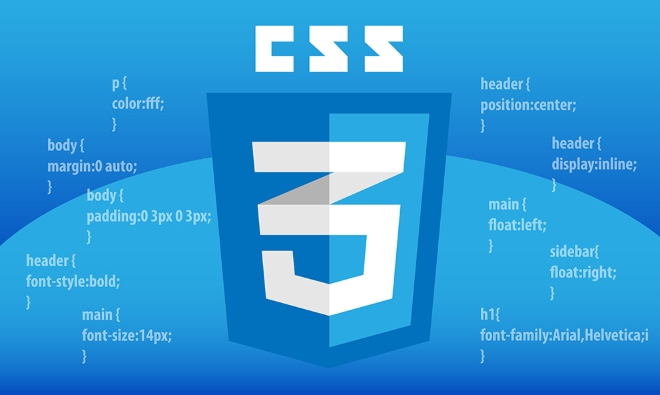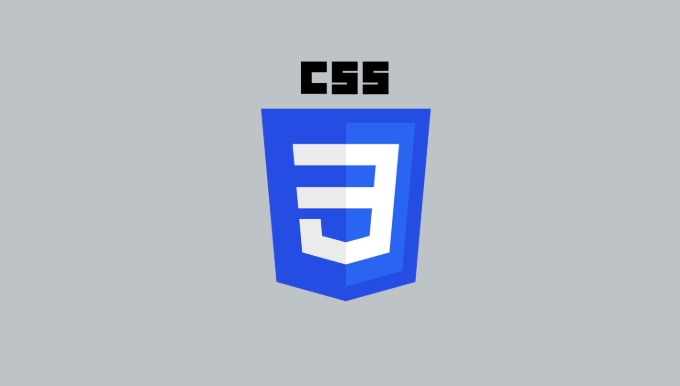When the content exceeds the container, it is necessary to use the overflow attribute of the CSS. Common scenarios include too long pop-up windows, truncated card information, and displaying some content in fixed height areas. How to use: 1.overflow: visible default overflow displays external; 2.overflow: hidden hides overflow content; 3.overflow: scroll always displays scroll bars; 4.overflow: auto displays scroll bars when auto exceeds. To achieve the ellipsis effect, you need to cooperate with other attributes: use white-space: nowrap and text-overflow: ellipsis to achieve single line omission, and use -webkit-line-clamp scheme or pseudo-element simulation for multiple lines omissions.

Sometimes the page content is too much and the layout is broken. At this time, you need to use the CSS overflow attribute to handle overflow content. It helps you control whether to hide, scroll or leave it alone when the content exceeds the container.

When do you need to use overflow?
When you set a fixed height or width for an element, or use max-width / max-height , it is easy to "run out" as much content. For example, if there are too many texts in a card component, or if a fixed-size pop-up window cannot be installed, these situations can be controlled by overflow .

Common scenarios include:
- The pop-up content is too long and needs to be scrolled
- Card information truncated to display ellipsis
- Only some content is displayed in the fixed height area
At this time, you need to consider adding an overflow attribute to the container.

Overflow Common values and uses
CSS's overflow supports several commonly used values, each with different effects:
-
visible(default): The content will not be cropped and will be displayed outside the box -
hidden: Exceeding the part directly hides -
scroll: Scroll bars are displayed regardless of whether the content is exceeded or not -
auto: The scroll bar will be displayed only if the content exceeds the content, and if it does not exceed the content, it will not be displayed.
For example, if you want a div to automatically appear after the content exceeds the content, you can write it like this:
.box {
width: 200px;
max-height: 100px;
overflow: auto;
} If you just want the content not to overflow and don't want the user to scroll to view it, use overflow: hidden; .
What should I do if I want the text to overflow and display the ellipsis?
It is not enough to just use overflow: hidden; it is necessary to cooperate with other attributes to achieve the effect of "...". Commonly, single-line omission:
.text {
white-space: nowrap;
overflow: hidden;
text-overflow: ellipsis;
} If multiple lines are omitted, you can use -webkit-line-clamp :
.multi-line {
display: -webkit-box;
-webkit-box-orient: vertical;
-webkit-line-clamp: 3;
overflow: hidden;
}Note that this method has good compatibility, but not all browsers are natively supported. If compatibility requirements are high, pseudo-elements can also be used to simulate ellipses.
Basically that's all. Although overflow looks simple, it is very practical in actual layout. The key is to understand the behavioral differences between different values and how to use them in conjunction with other attributes.
The above is the detailed content of Managing overflow content with css overflow property. For more information, please follow other related articles on the PHP Chinese website!

Hot AI Tools

Undress AI Tool
Undress images for free

Undresser.AI Undress
AI-powered app for creating realistic nude photos

AI Clothes Remover
Online AI tool for removing clothes from photos.

Clothoff.io
AI clothes remover

Video Face Swap
Swap faces in any video effortlessly with our completely free AI face swap tool!

Hot Article

Hot Tools

Notepad++7.3.1
Easy-to-use and free code editor

SublimeText3 Chinese version
Chinese version, very easy to use

Zend Studio 13.0.1
Powerful PHP integrated development environment

Dreamweaver CS6
Visual web development tools

SublimeText3 Mac version
God-level code editing software (SublimeText3)

Hot Topics
 What is 'render-blocking CSS'?
Jun 24, 2025 am 12:42 AM
What is 'render-blocking CSS'?
Jun 24, 2025 am 12:42 AM
CSS blocks page rendering because browsers view inline and external CSS as key resources by default, especially with imported stylesheets, header large amounts of inline CSS, and unoptimized media query styles. 1. Extract critical CSS and embed it into HTML; 2. Delay loading non-critical CSS through JavaScript; 3. Use media attributes to optimize loading such as print styles; 4. Compress and merge CSS to reduce requests. It is recommended to use tools to extract key CSS, combine rel="preload" asynchronous loading, and use media delayed loading reasonably to avoid excessive splitting and complex script control.
 How to use Lotties in Figma
Jun 14, 2025 am 10:17 AM
How to use Lotties in Figma
Jun 14, 2025 am 10:17 AM
In the following tutorial, I will show you how to create Lottie animations in Figma. We'll use two colorful designs to exmplify how you can animate in Figma, and then I'll show you how to go from Figma to Lottie animations. All you need is a free Fig
 Breaking Boundaries: Building a Tangram Puzzle With (S)CSS
Jun 13, 2025 am 11:33 AM
Breaking Boundaries: Building a Tangram Puzzle With (S)CSS
Jun 13, 2025 am 11:33 AM
We put it to the test and it turns out Sass can replace JavaScript, at least when it comes to low-level logic and puzzle behavior. With nothing but maps, mixins, functions, and a whole lot of math, we managed to bring our Tangram puzzle to life, no J
 External vs. Internal CSS: What's the Best Approach?
Jun 20, 2025 am 12:45 AM
External vs. Internal CSS: What's the Best Approach?
Jun 20, 2025 am 12:45 AM
ThebestapproachforCSSdependsontheproject'sspecificneeds.Forlargerprojects,externalCSSisbetterduetomaintainabilityandreusability;forsmallerprojectsorsingle-pageapplications,internalCSSmightbemoresuitable.It'scrucialtobalanceprojectsize,performanceneed
 Does my CSS must be on lower case?
Jun 19, 2025 am 12:29 AM
Does my CSS must be on lower case?
Jun 19, 2025 am 12:29 AM
No,CSSdoesnothavetobeinlowercase.However,usinglowercaseisrecommendedfor:1)Consistencyandreadability,2)Avoidingerrorsinrelatedtechnologies,3)Potentialperformancebenefits,and4)Improvedcollaborationwithinteams.
 CSS Case Sensitivity: Understanding What Matters
Jun 20, 2025 am 12:09 AM
CSS Case Sensitivity: Understanding What Matters
Jun 20, 2025 am 12:09 AM
CSSismostlycase-insensitive,butURLsandfontfamilynamesarecase-sensitive.1)Propertiesandvalueslikecolor:red;arenotcase-sensitive.2)URLsmustmatchtheserver'scase,e.g.,/images/Logo.png.3)Fontfamilynameslike'OpenSans'mustbeexact.
 What is Autoprefixer and how does it work?
Jul 02, 2025 am 01:15 AM
What is Autoprefixer and how does it work?
Jul 02, 2025 am 01:15 AM
Autoprefixer is a tool that automatically adds vendor prefixes to CSS attributes based on the target browser scope. 1. It solves the problem of manually maintaining prefixes with errors; 2. Work through the PostCSS plug-in form, parse CSS, analyze attributes that need to be prefixed, and generate code according to configuration; 3. The usage steps include installing plug-ins, setting browserslist, and enabling them in the build process; 4. Notes include not manually adding prefixes, keeping configuration updates, prefixes not all attributes, and it is recommended to use them with the preprocessor.
 What are CSS counters?
Jun 19, 2025 am 12:34 AM
What are CSS counters?
Jun 19, 2025 am 12:34 AM
CSScounterscanautomaticallynumbersectionsandlists.1)Usecounter-resettoinitialize,counter-incrementtoincrease,andcounter()orcounters()todisplayvalues.2)CombinewithJavaScriptfordynamiccontenttoensureaccurateupdates.






